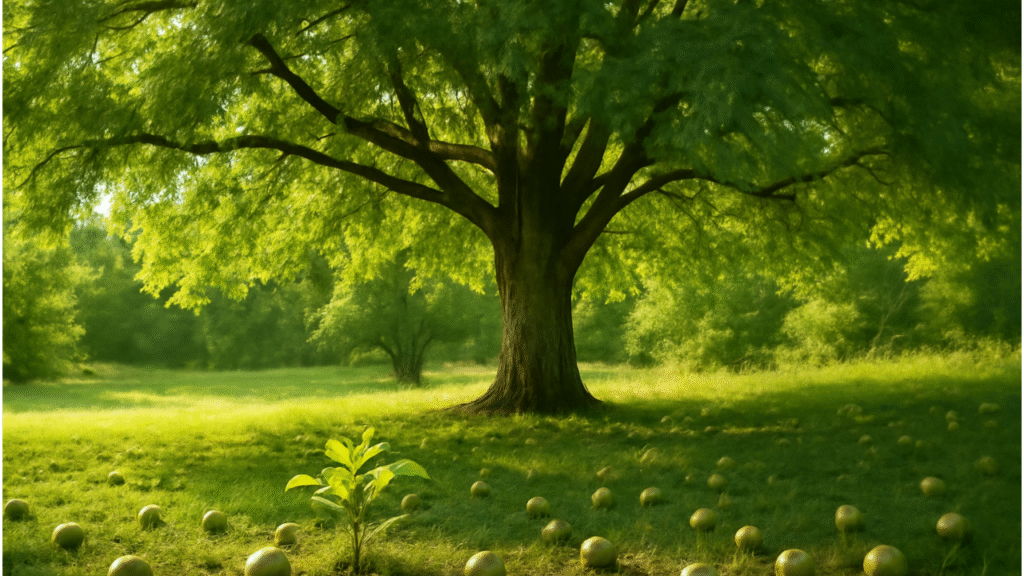
How to Grow a Hickory Tree from Nut: A Step-by-Step Guide for Beginners
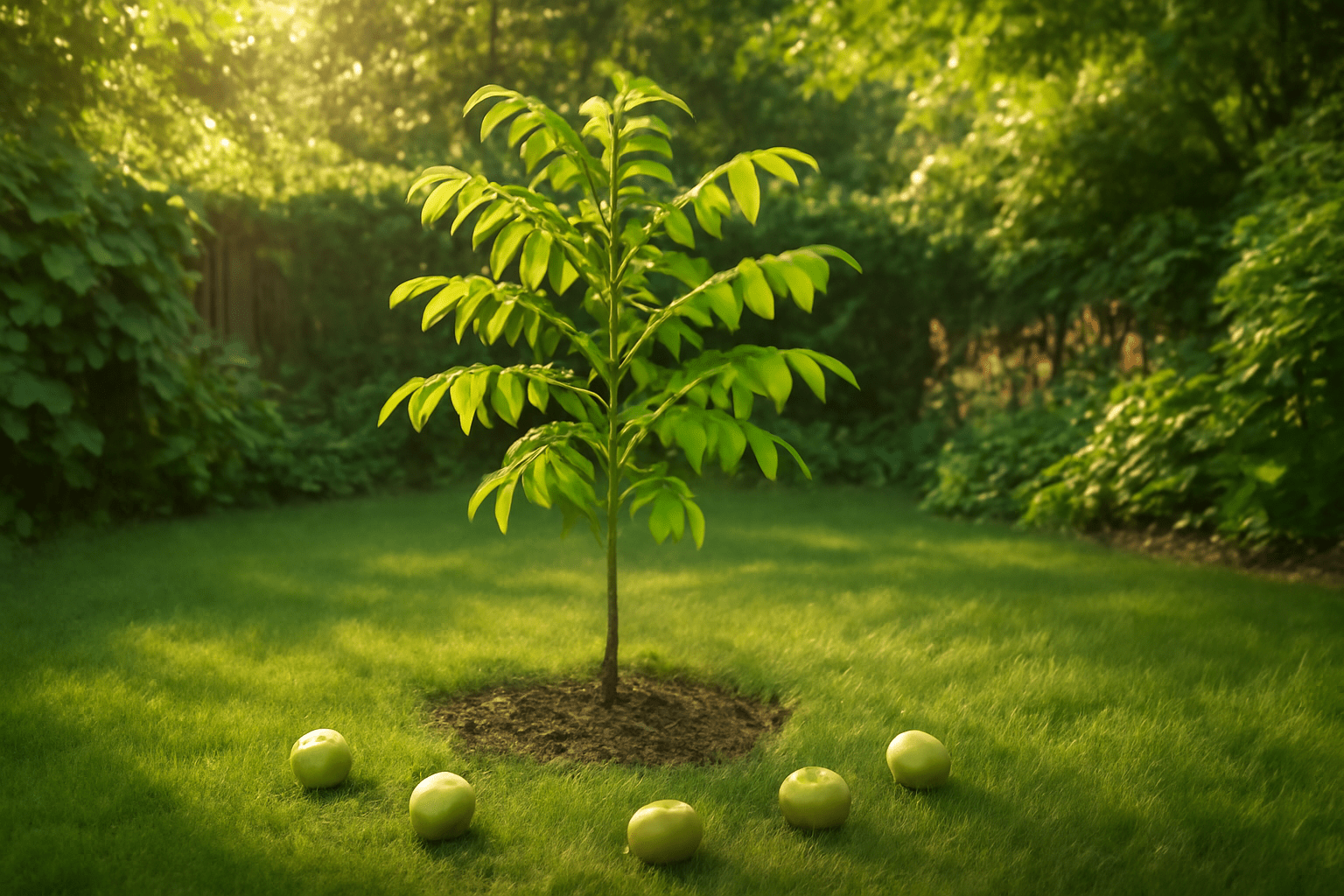
Table of Contents
Toggle🌳😊 Understanding the Hickory Tree 😊🌳
Before diving into how to grow a hickory tree from a nut 🌰, it’s essential to understand what makes these trees so special! Hickory trees are a great addition to any yard 🏡, offering both aesthetic value 🌿 and practical benefits 🌟. Here’s a quick overview to help you appreciate what you’re about to plant 🌱.🌰 What is a Hickory Tree? 🌰
A hickory tree is a large, sturdy hardwood tree 🌳 known for its unique, tough nuts and beautiful leaves 🍃. These trees can grow up to 100 feet tall 🏢, making them an excellent choice for adding shade 🌞 to your yard or garden 🌷. They are also celebrated for their strong wood 💪, often used for furniture 🛋️, tool handles 🛠️, and even smoking meats 🍖.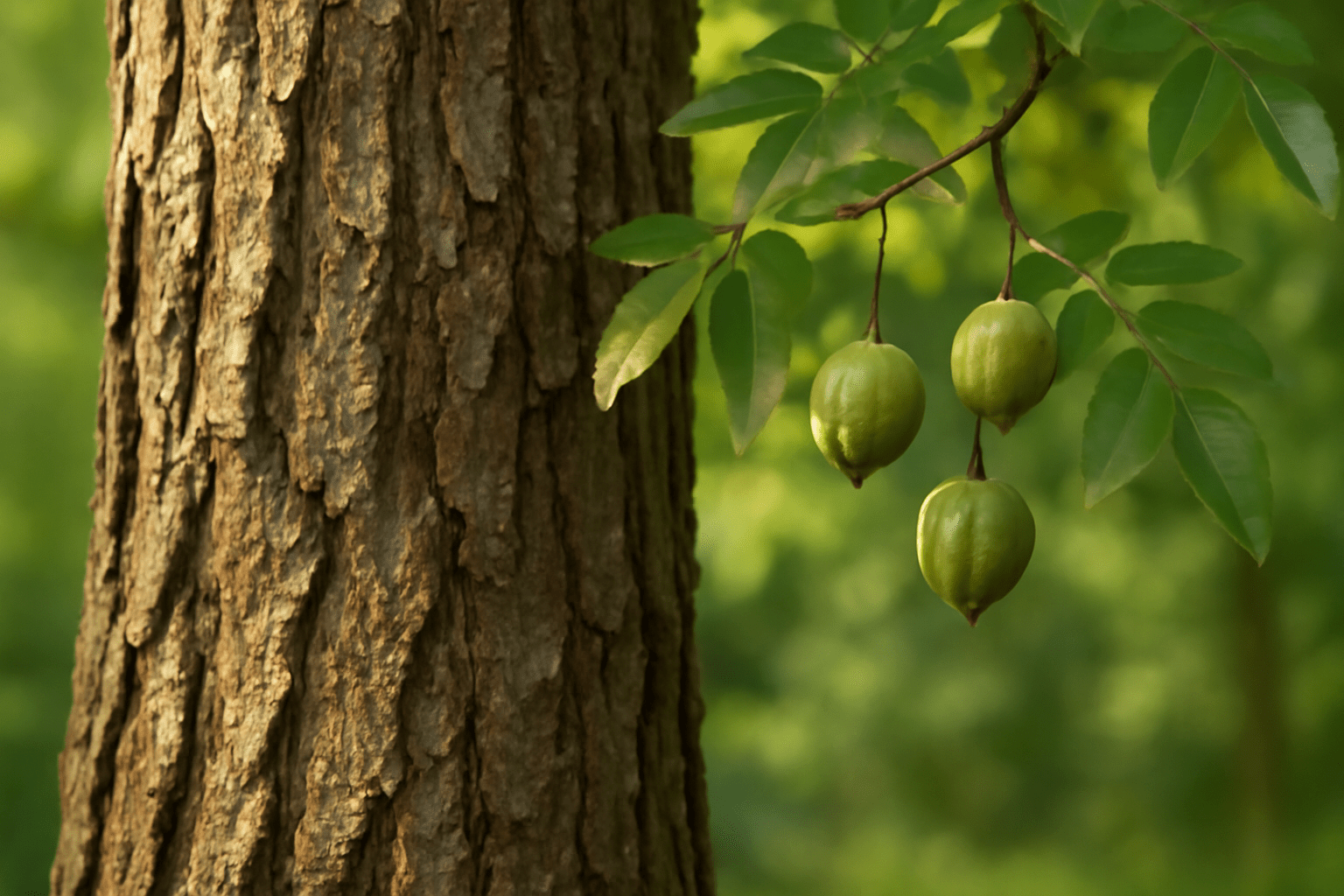
- Shagbark Hickory (with its peeling bark 🌲 and delicious nuts 🌰)
- Shellbark Hickory (similar to shagbark but with larger nuts 🌰)
- Pecan (a hickory variety popular for its edible nuts 🥧, often grown for commercial purposes 💼)
🌳 Why Grow a Hickory Tree? 🌳
You might wonder, why go through the effort of growing a hickory tree from nut 🌰? Here are some great reasons 🌟:- Tasty Nuts: Hickory nuts are rich in flavor 😋, perfect for snacking 🍴 or baking 🍪. Imagine harvesting fresh nuts 🌰 from your own tree 🌳!
- Natural Beauty: Hickory trees have lovely foliage 🍂 that turns golden-yellow 🌟 in the fall 🍁, making them a stunning addition to your landscape 🏞️.
- Wildlife Support: These trees attract wildlife 🦉, such as squirrels 🐿️, birds 🦅, and even deer 🦌, providing a natural habitat 🏞️.
- Longevity and Value: Once established, hickory trees can live for hundreds of years 🕰️, and their hard, durable wood 🪵 is highly valued for woodworking 🪑.
🌱 The Growth Cycle 🌱
Hickory trees are slow-growing 🐢, especially in the first few years 🌱. But, with patience 🕰️, you’ll eventually have a strong tree 🌳 that will not only produce nuts 🌰 but also serve as a beautiful centerpiece in your garden 🌸. They thrive in temperate climates 🌤️ and require a lot of space 📏, so make sure you plant them in a location where they’ll have room to grow 🌳.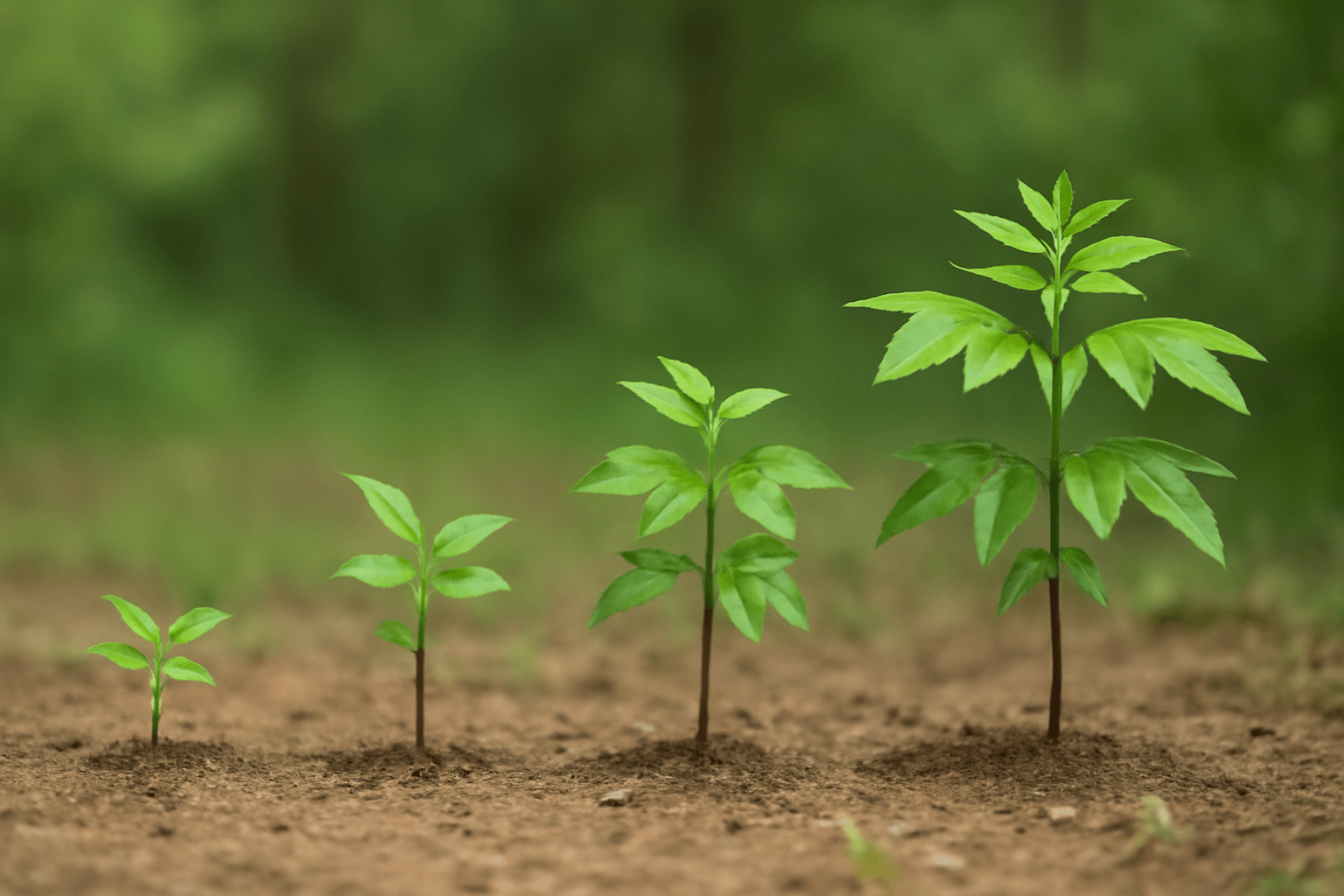
🌰 What You’ll Need to Grow a Hickory Tree 🌳
Growing a hickory tree from a nut is a rewarding experience, but it does require some essential tools and materials to set you up for success. Here’s everything you’ll need to get started on your hickory-growing journey! 😊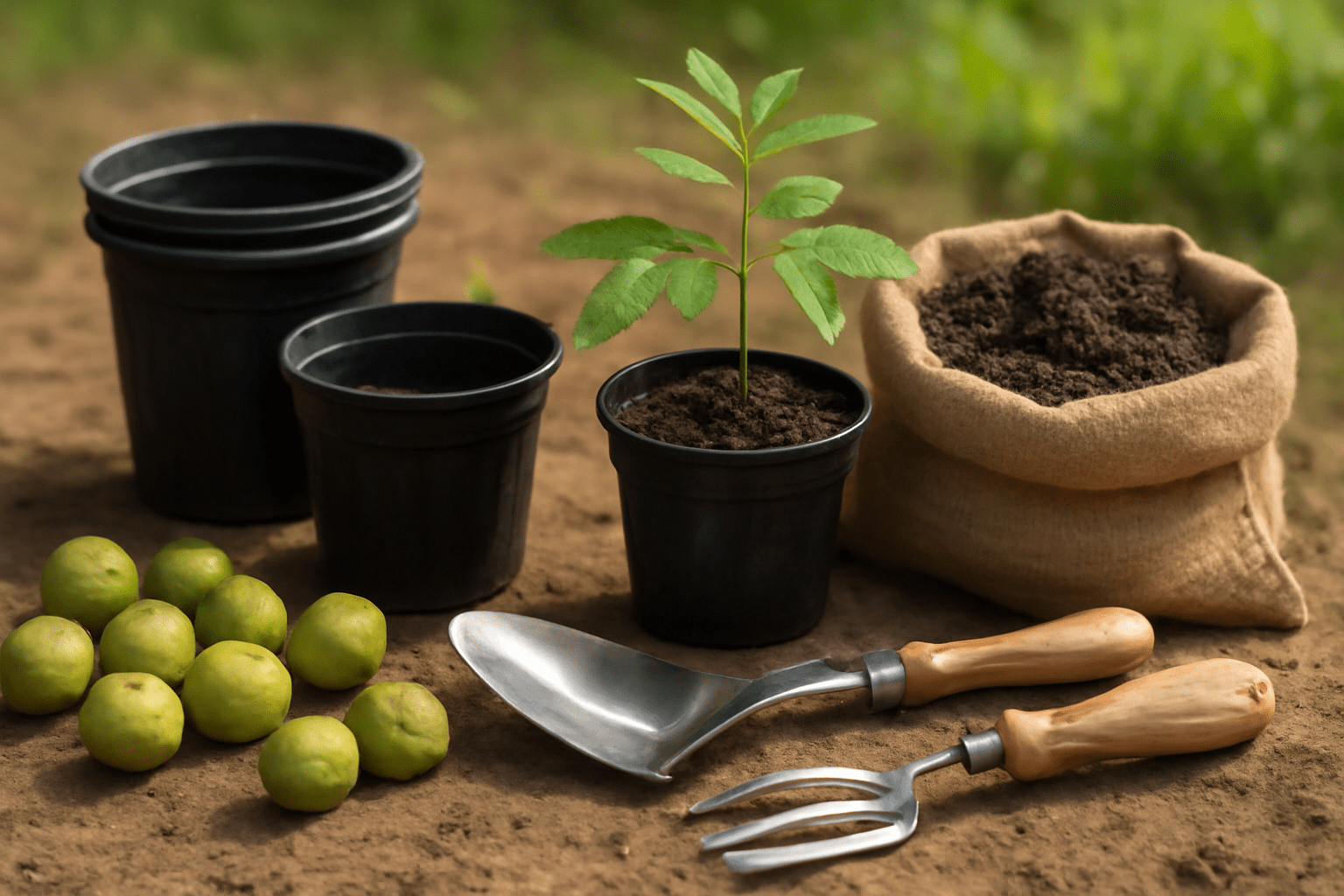
🌰 1. Hickory Nuts 🌰
First and foremost, you’ll need high-quality hickory nuts. These can be harvested from mature hickory trees in your area or purchased online. 🛒🌰 Types of Hickory Nuts 🌰:
There are different species of hickory trees, such as Shagbark and Shellbark. Both are great choices, but make sure to pick the right variety based on your region and growing conditions.🌰 Freshness Matters 🌰:
Only use healthy, mature nuts. Avoid nuts with visible cracks or holes, as they may be damaged and less likely to germinate.🪴 2. Planting Containers 🪴
When growing hickory trees from nuts, you’ll need containers to start your seeds. Here’s what you’ll need:🪴 Seed Pots or Flats 🪴:
These are ideal for germinating your hickory nuts. Look for pots that allow good water drainage to avoid waterlogging, which can harm your seeds.🪴 Size Matters 🪴:
Choose containers that are deep enough for the roots to grow. Small pots work, but larger containers give the seedlings more room to develop strong roots.🌱 3. Well-Draining Soil 🌱
Hickory trees love well-draining soil, so choose a soil mix that provides both moisture retention and excellent drainage. Here’s what you need to know:🌱 Soil Type 🌱:
A good, nutrient-rich potting soil mixed with perlite or sand helps to keep the soil light and well-draining.🌱 pH Levels 🌱:
Hickory trees thrive in slightly acidic to neutral soil (pH 6.0 to 7.0). Test the soil to ensure it’s within the right range for optimal growth.💧 4. Watering Can or Hose 💧
Proper watering is essential for nurturing your hickory tree from nut to sapling. A watering can with a gentle spout or a garden hose with a fine mist setting is perfect for seedlings.💧 Consistent Moisture 💧:
Keep the soil consistently moist, but not soggy. Overwatering can lead to root rot, while underwatering can stunt the growth of your seedling.🍂 5. Mulch and Compost 🍂
Mulch and compost are your best friends when growing hickory trees. They help to maintain moisture, protect the roots, and enrich the soil with essential nutrients.🍂 Organic Mulch 🍂:
Spread a thin layer of organic mulch around the base of the seedlings to keep the roots cool and hydrated.🍂 Compost 🍂:
Incorporating compost into the soil will boost its fertility, providing your young tree with the nutrients it needs to grow strong.☀️ 6. A Sunny Location ☀️
Hickory trees love the sun, so make sure to pick a location that gets plenty of light—ideally, at least 6 hours of direct sunlight each day. 🌞☀️ Indoors or Outdoors ☀️:
If you’re starting indoors, place the pots by a south-facing window. If planting outdoors, ensure the spot is sunny and not shaded by taller plants or buildings.❄️ 7. Cold Stratification Tools ❄️
Hickory nuts may need a little extra help to germinate. Cold stratification simulates winter conditions to break seed dormancy and encourage sprouting.❄️ Stratification Process ❄️:
Place the nuts in a damp paper towel or sand, and store them in the fridge for 30 to 60 days. This process mimics the natural winter conditions the seeds need to germinate. By gathering these materials, you’ll be ready to plant your hickory nuts and watch them grow into strong, beautiful trees. 🌳 Remember, patience is key—growing a hickory tree from nut to full maturity takes time, but it’s well worth the effort! 💪😊🌰 Preparing the Hickory Nuts for Planting 🌳
Preparing your hickory nuts properly before planting is crucial for ensuring successful germination and healthy growth. This section will guide you through each step of the preparation process, from harvesting the nuts to cold stratification. 😊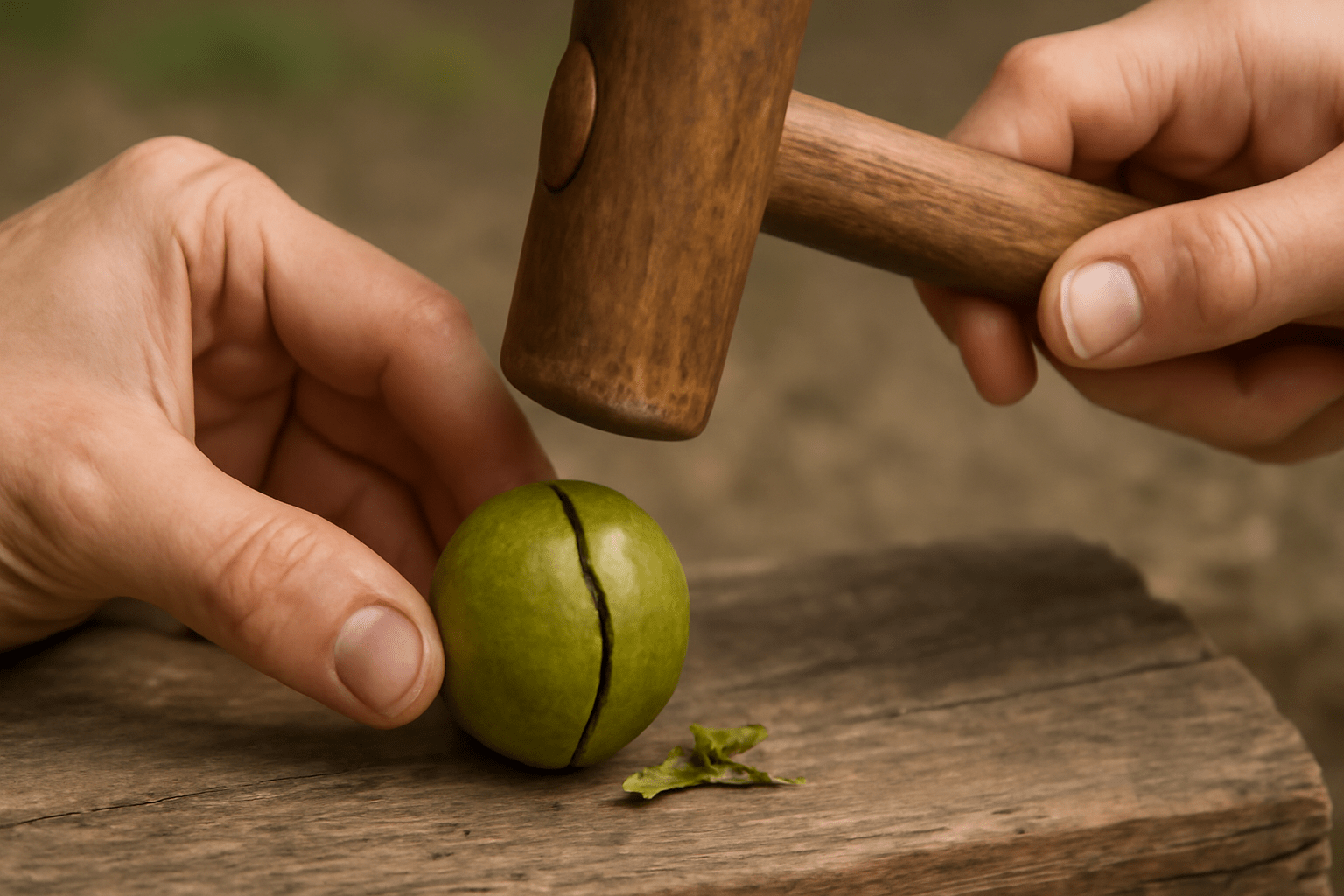
🌰 Step 1: Harvesting Fresh Hickory Nuts 🌰
🌰 How to Tell When a Hickory Nut is Ripe 🌰
Ripe hickory nuts are easy to identify once you know what to look for. Here are a few signs to help you out:- Color: The outer husk turns from green to brown when the nut is ready to be harvested. 🌿
- Falling from the Tree: Hickory nuts naturally fall from the tree once they’re mature. If the nuts are already on the ground, it’s a good indicator they’re ripe. 🍂
- Husk Integrity: The husk will start to split or crack open as the nut matures. If the husk is intact and hard to open, the nut may not be fully ripe yet. 🌳
🌰 Best Time to Collect Nuts for Planting 🌰
The best time to collect hickory nuts for planting is during late summer to early autumn, usually between late September and early October. During this period, the nuts are mature enough to begin the planting process. Tip: Always collect nuts shortly after they fall from the tree for the best chance at germination. Nuts that have been sitting on the ground too long may have been eaten by animals 🐿️ or damaged by the elements 🌧️. 😅🛠️ Step 2: Removing the Nut from the Husk 🛠️
Once you’ve harvested your fresh hickory nuts, the next step is removing them from the husk, which can be a little tricky. Here’s how to do it carefully:🛠️ Quick Tips on De-husking the Nuts Without Damaging Them 🛠️
- Manual Removal: Gently press the nut’s husk to crack it open, then remove the nut. If the husk is tough, use a hammer or a mallet to lightly tap it until it splits. 🔨
- Don’t Force It: Be gentle when removing the nut, as you don’t want to damage the seed inside. If you see any cracks or holes in the nut, it may be best to discard it as it won’t likely germinate. 🚫
- Cleaning the Nut: After removing the husk, clean the nut by wiping off any remaining husk material. This ensures no contaminants are left behind when you begin the next step. 🧼
❄️ Step 3: Cold Stratification (If Needed) ❄️
❄️ Explanation of Cold Stratification and Why It’s Important ❄️
Cold stratification is a process that mimics the cold winter months, helping to break the dormancy of seeds and prepare them for germination. Many tree nuts, including hickory nuts, need this cold treatment to sprout successfully. Without it, the nuts might not germinate or could take much longer than expected. 🌨️ Why It’s Needed: Hickory seeds naturally require a chilling period (similar to winter) to wake up from their dormant state. Cold stratification essentially “tricks” the nut into thinking it’s gone through a winter season. 🌨️❄️ How to Cold Stratify Hickory Nuts: Steps for Pre-Planting Storage ❄️
- Step 1: Place your cleaned hickory nuts into a damp paper towel or sand. 🏖️
- Step 2: Put the towel or sand and nuts into a plastic bag or container. Seal it tightly to maintain moisture. 🛍️
- Step 3: Store the bag or container in the fridge (NOT the freezer) for 30 to 60 days. 🧊
- Step 4: Check periodically to ensure the nuts don’t dry out. If the towel gets too dry, lightly mist it with water. 💦
❄️ Timeline and Temperature Requirements for Stratification ❄️
- Temperature Range: The ideal temperature for cold stratification is around 34°F to 41°F (1°C to 5°C), which is just above freezing. 🥶
- Duration: Hickory nuts need about 30 to 60 days of cold stratification. The longer you leave the nuts in the fridge, the better the chances of successful germination. ⏳
🌱 Caring for the Hickory Tree Seedlings 🌳
Once your hickory nuts have germinated and sprouted into young seedlings, it’s time to provide them with the care they need to grow strong and healthy. In this section, we’ll walk you through the essential steps for nurturing your hickory tree seedlings into robust trees. 😊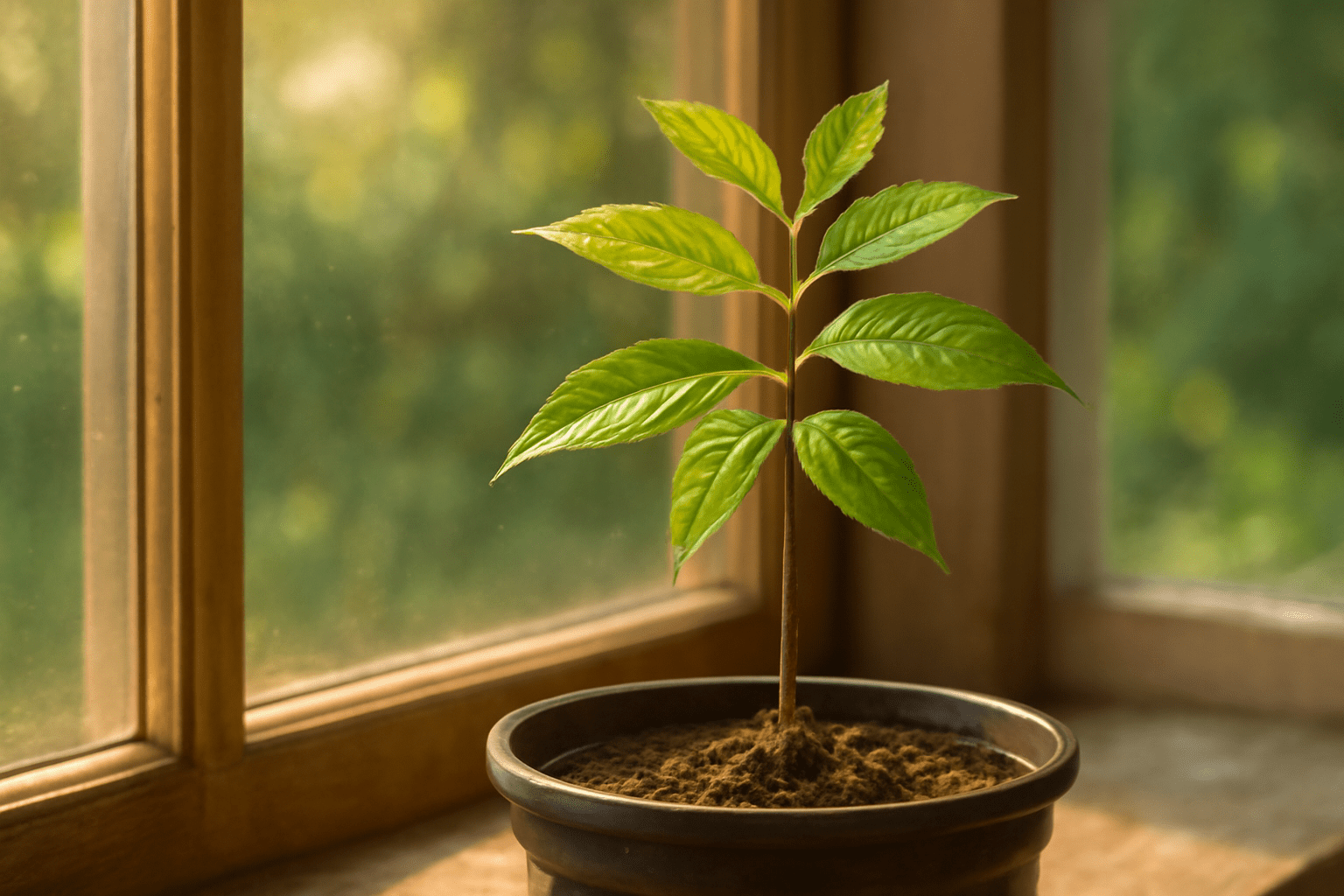
☀️ Step 1: Ensuring Proper Light and Temperature ☀️
Hickory seedlings need the right amount of light and the right temperature to thrive. Here’s what you need to know:🌞 Light Requirements 🌞:
Hickory trees need plenty of sunlight, especially in their early stages. Place your seedlings in a location where they will receive at least 6 hours of direct sunlight per day. 🌞 Tip: If you’re growing them indoors, a south-facing window is the best option. If outdoors, make sure the spot is sunny and free from heavy shade. 🌿🌡️ Ideal Temperature 🌡️:
Hickory trees prefer temperate climates. The ideal temperature for seedling growth is between 60°F and 75°F (15°C to 24°C). Avoid exposing young seedlings to frost ❄️ or excessive heat ☀️. Tip: If you’re growing indoors, maintain a consistent room temperature to avoid stressing the seedlings. 🌡️💧 Step 2: Managing Soil Moisture 💧
Watering your hickory seedlings correctly is crucial for their growth. Too much or too little water can harm them. Here’s how to get it just right:🌱 Consistent Moisture 🌱:
Keep the soil moist but not soggy. Hickory seedlings like a consistently damp environment but dislike being waterlogged. 🌿 Tip: Water your seedlings whenever the top inch of the soil feels dry to the touch. Be sure to let excess water drain away to avoid root rot. 💧💦 Watering Technique 💦:
Use a watering can or spray bottle to water gently. Avoid using strong water pressure that might disturb the young roots. 🌻🚫 Signs of Overwatering 🚫:
Yellowing leaves 🍂 or mold around the base of the plant are signs of overwatering. If this happens, let the soil dry out before watering again.🌳 Step 3: Transplanting Seedlings 🌳
As your hickory seedlings grow, they will eventually need to be transplanted into larger pots or directly into the ground. Here’s when and how to move them:⏳ When to Transplant ⏳:
Your hickory seedlings should be transplanted when they have several sets of leaves and their roots have filled the container. This usually happens after 6 to 12 months of growth. 🌱 Tip: Make sure the seedlings are well-established before moving them, as transplanting too early can shock the plant. 💥🌞 Choosing the Right Location 🌞:
If you’re transplanting outside, choose a sunny spot with well-drained soil. Hickory trees can grow quite large 🌳, so make sure there is enough space for the tree to spread its roots and branches.🌍 How to Transplant 🌍:
- Prepare the New Site: Dig a hole about twice the size of the seedling’s root ball. 🌍
- Gently Remove the Seedling: Carefully take the seedling out of its pot, being sure not to damage the roots. 🌱
- Place and Water: Place the seedling in the hole, fill it with soil, and water it well to settle the roots. 💧
✂️ Step 4: Pruning and Shaping the Seedlings ✂️
Pruning helps promote strong, healthy growth and prevents any damage from pests or diseases. Follow these tips to keep your hickory seedlings in top shape:🌱 Early Pruning 🌱:
In the first few years, prune off any dead or damaged branches to encourage strong growth. Focus on creating a straight trunk and even branching. 🌿🌳 Shaping the Tree 🌳:
For healthy structure, remove competing leaders (multiple stems growing from the top). Leave one main stem to grow upward, and trim any side shoots to allow the tree to develop strong lateral branches. 🌱 Tip: Use clean, sharp pruning shears ✂️ to avoid injuring the tree and to make clean cuts.🐛 Step 5: Dealing with Pests and Diseases 🐛
While hickory trees are relatively hardy, they can still be susceptible to certain pests and diseases. Here’s how to protect your young seedlings:🦗 Common Pests 🦗:
Look out for aphids, caterpillars, and scale insects 🐜 that may target young hickory trees. If you see any pests, remove them manually or use an organic insecticide 🌿.🌿 Fungal Diseases 🌿:
Fungal diseases like powdery mildew can affect young seedlings. Ensure your seedlings are not overcrowded, and always water at the base to prevent moisture buildup on the leaves. 🌱🐞 Beneficial Insects 🐞:
Encourage beneficial insects like ladybugs 🦋 and predatory beetles 🐞 that can help control pest populations naturally. By following these steps, you’ll give your hickory seedlings the best chance at thriving into strong, mature trees. 🌳 With proper care, your seedlings will grow into robust trees that will provide beauty, shade, and even nuts for years to come! 😊🌳 Growing and Maintaining a Healthy Hickory Tree 🌱
Now that your hickory tree is more established, it’s time to focus on helping it grow into a strong and healthy tree. In this section, we’ll cover the essential care techniques, including proper fertilization, pruning, and pest management. With a little dedication, your hickory tree will thrive and flourish for years to come. 😊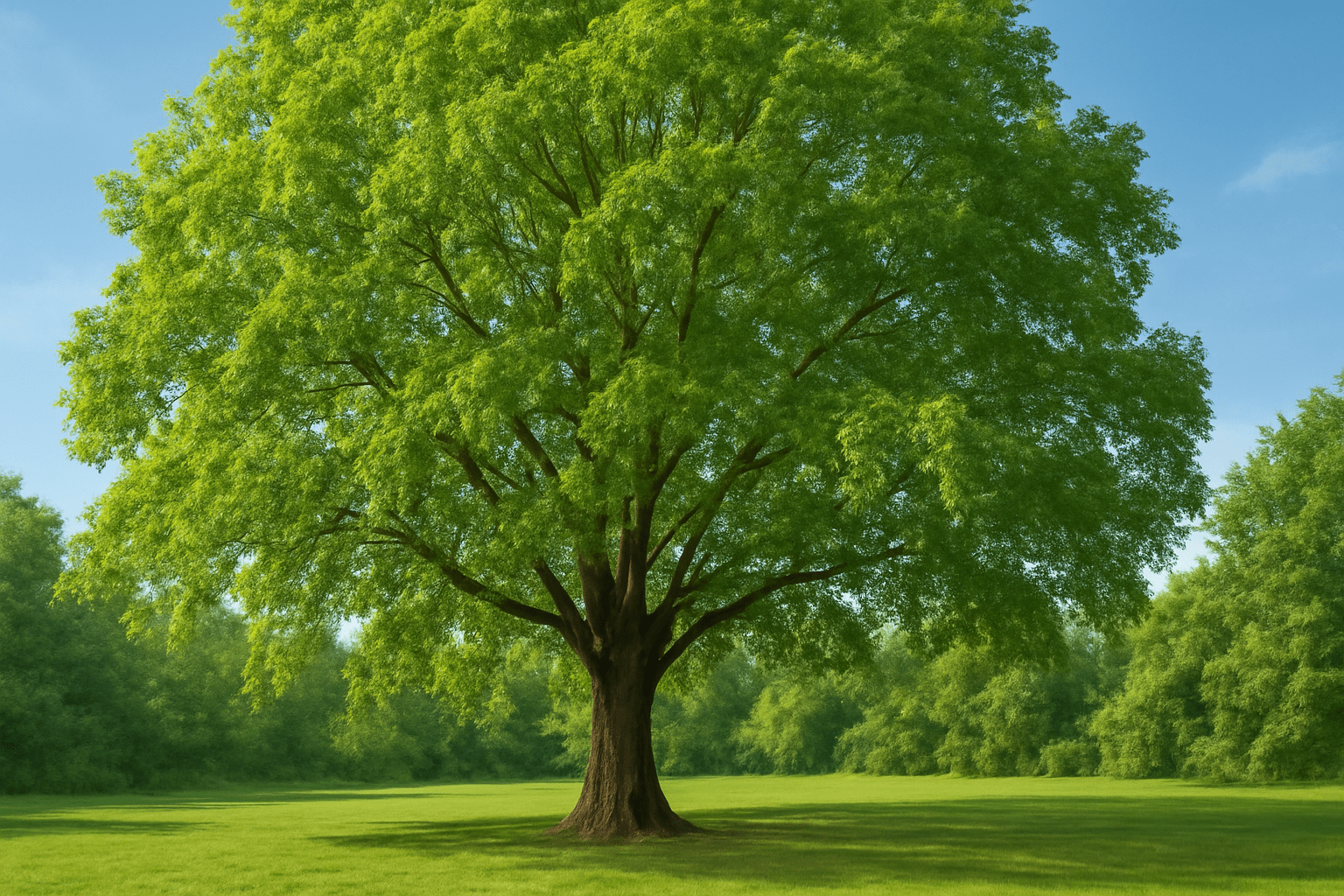
🌿 Step 1: Fertilization 🌿
Fertilizing your hickory tree is crucial for ensuring that it has all the nutrients it needs to grow strong and healthy. Here’s how to fertilize your tree properly:🌱 What Fertilizer to Use 🌱:
Use a balanced, slow-release fertilizer with equal amounts of nitrogen (N), phosphorus (P), and potassium (K), such as a 10-10-10 or 20-20-20 mix. This will help promote healthy root growth and leaf development. 🌿🕓 When to Fertilize 🕓:
Apply fertilizer in early spring, just before the tree begins its new growth cycle. This gives the tree the nutrients it needs for the growing season. Avoid fertilizing during the late fall 🍂 or winter months ❄️, as the tree is dormant and won’t be able to absorb the nutrients effectively.🌱 How to Apply Fertilizer 🌱:
- Spread the fertilizer evenly around the tree’s base, avoiding direct contact with the trunk. 🌳
- Water the soil well after applying the fertilizer to help it penetrate the soil and reach the tree’s roots. 💦
✂️ Step 2: Pruning and Shaping the Tree ✂️
Pruning is essential for maintaining the shape and health of your hickory tree as it matures. Here’s how to keep your tree well-shaped and free from damage:⏰ When to Prune ⏰:
Prune your hickory tree during its dormant season—typically in late winter or early spring before the tree starts actively growing. This minimizes stress on the tree and helps it recover quickly. 🌿✂️ Pruning Tips ✂️:
- Remove Dead or Damaged Branches: Prune any branches that are dead, diseased, or damaged. This allows the tree to focus its energy on healthy growth. 🍂
- Shape the Tree: If you want a specific shape, selectively prune branches that interfere with the desired form of the tree. Be careful not to over-prune, as this can stunt growth. ✂️
✨ How to Prune Properly ✨:
- Use sharp, clean pruning shears to make smooth cuts. ✂️
- Avoid cutting too close to the main trunk—leave a small collar of bark for the tree to heal naturally. 🌳
- For larger branches, use a saw to ensure a clean, straight cut. 🔨
🐛 Step 3: Dealing with Pests and Diseases 🐛
Even mature hickory trees can be affected by pests and diseases. Taking preventive steps and acting quickly when issues arise will keep your tree healthy.🦗 Common Pests 🦗:
- Aphids and Scale Insects: These may attack young trees, feeding on sap and weakening the tree. Use insecticidal soap or neem oil to control these pests naturally. 🌿
- Caterpillars: Can also be a problem, especially if they start to defoliate the tree. Hand-pick caterpillars or use a biological insecticide like Bacillus thuringiensis (Bt). 🐛
🍃 Common Diseases 🍃:
- Powdery Mildew and Leaf Spot: Can affect the leaves of hickory trees, especially if there’s excessive moisture. To prevent these diseases:
- Avoid overhead watering to keep leaves dry. 💧
- Prune away any infected leaves to limit the spread. 🍂
- Root Rot: Can occur if the soil doesn’t drain well. Make sure your tree is planted in well-draining soil and that the root system is not sitting in standing water. 🌱
🛡️ Preventive Measures 🛡️:
- Apply mulch around the base of the tree to retain moisture and discourage weeds, but keep it a few inches away from the trunk to prevent rot. 🌿
- Use organic pest control methods, such as introducing beneficial insects (like ladybugs 🦋) that help control harmful pests.
🌦️ Step 4: Protecting Your Tree During Extreme Weather 🌦️
As your hickory tree matures, it will become more resilient to weather conditions. However, there are still times when extra care is needed:❄️ Winter Care ❄️:
In colder climates, young hickory trees can benefit from winter protection. Wrap the trunk with a protective tree wrap to shield it from freezing temperatures and winter sunscald. You can also add mulch around the base to protect the roots from freezing. 🧤☀️ Summer Heat ☀️:
During hot, dry periods, hickory trees may require extra water. Keep the soil moist (but not soggy), and make sure the tree receives enough water, especially during dry spells. 💧🌬️ Wind Protection 🌬️:
Strong winds can damage the branches and roots of young trees. If your hickory tree is exposed to high winds, consider staking it temporarily to provide support until it matures and becomes more wind-resistant. 🌳🌰 Step 5: Encouraging Healthy Growth and Nut Production 🌰
If you’re hoping your hickory tree will eventually produce nuts, it’s important to keep the tree healthy and thriving. Here’s how to encourage nut production:🍃 Pollination 🍃:
Hickory trees are wind-pollinated, meaning they don’t require other trees for pollination. However, having multiple trees nearby can increase pollination chances, especially for certain species. 🌬️🌿 Nutrient Needs 🌿:
Keep the tree well-fed with regular fertilization, especially as it matures. A healthy, well-fertilized tree is more likely to produce nuts when the time comes. 🌰⏳ Patience ⏳:
Hickory trees are slow-growing and can take 15-30 years before they start producing nuts, so be patient! Ensuring the tree’s long-term health will help guarantee a productive future. 🌳 With the right care, your hickory tree will grow into a strong, beautiful, and productive tree. 🌳 Consistent attention to watering, pruning, pest control, and fertilization will ensure its continued health and eventual nut production. Keep nurturing your hickory tree, and you’ll enjoy its beauty and benefits for years to come! 😊🌰 Harvesting Hickory Nuts from Your Tree 🌳
After years of care and patience, it’s finally time to reap the rewards of your hard work—harvesting the delicious hickory nuts from your tree! In this section, we’ll guide you through the process of harvesting hickory nuts at the right time, collecting them carefully, and storing them for future use or planting. 😊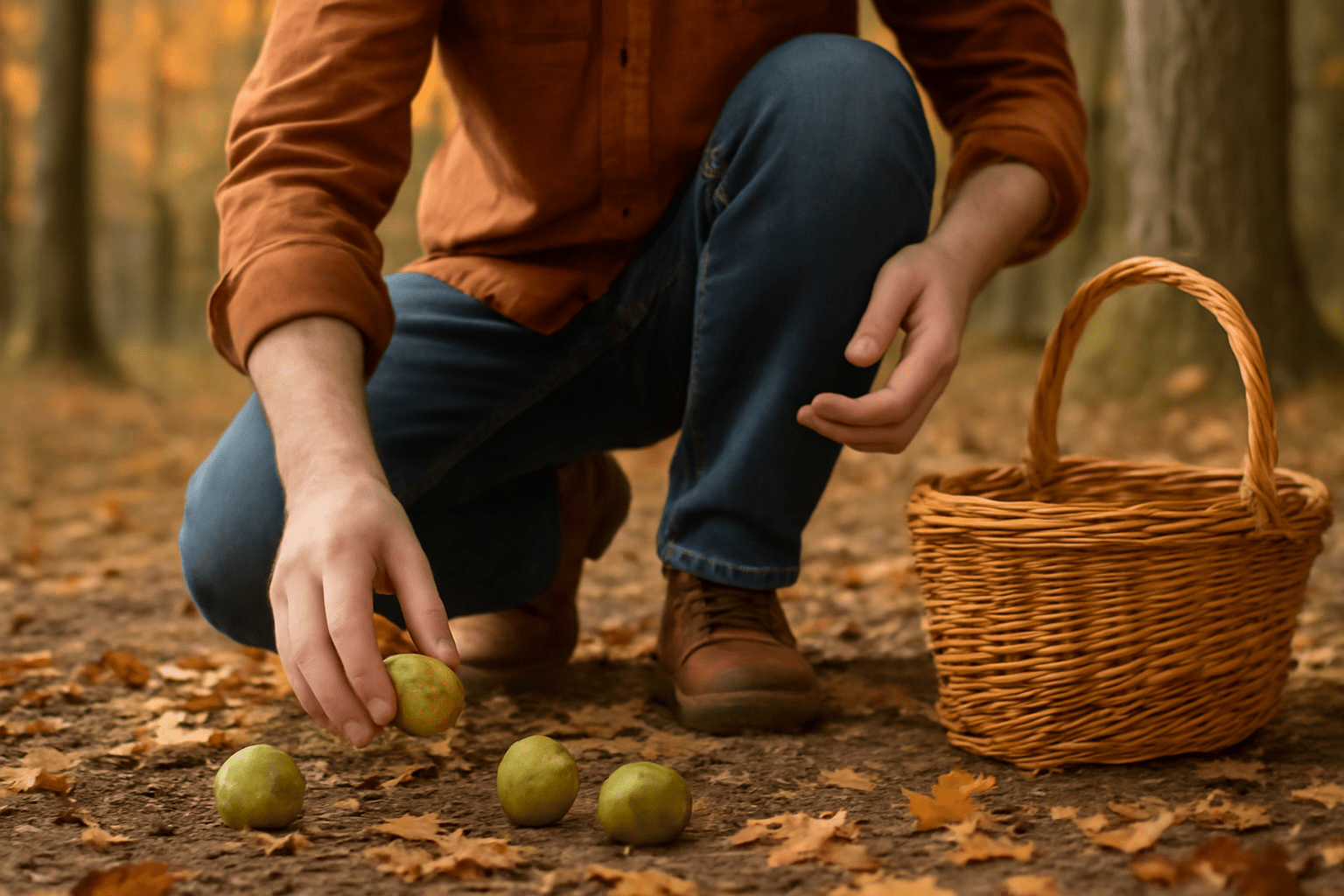
⏳ Step 1: When to Harvest Hickory Nuts ⏳
Knowing the right time to harvest hickory nuts is key to ensuring they’re fully mature and ready for consumption or planting. Here’s how to tell when they’re at their peak:🌳 Observe the Husk 🌳:
Ripe hickory nuts will have a brown, split husk. The husk naturally cracks open when the nuts are ready to fall. If the husk is still green and intact, the nuts are not yet fully ripe.⏰ Timing ⏰:
The best time to harvest hickory nuts is typically in late September to October. As the weather cools, the nuts will fall to the ground naturally when they’re ready. 🌳 Tip: Keep an eye on your tree in early fall. Once the nuts start falling, it’s a signal that they’re ripe and ready to be collected. 🍂🌰 Look for Freshly Fallen Nuts 🌰:
Hickory nuts fall from the tree when they’re mature, so you can collect them as soon as they drop to the ground. Tip: If you wait too long to harvest, some of the nuts may be eaten by wildlife, such as squirrels 🐿️ or birds 🦅.🧺 Step 2: Collecting and Storing the Nuts 🧺
Once the nuts have ripened and fallen to the ground, it’s time to gather them carefully and store them properly for later use. Here’s how:🧤 How to Collect the Nuts 🧤:
- Pick Them Up Quickly: After the nuts fall, collect them as soon as possible to prevent them from being eaten by animals. Use a garden rake or your hands to gather them from the ground. 🌱
- Inspect the Nuts: Check each nut for signs of damage. Discard any nuts with cracks, holes, or mold. Healthy, undamaged nuts will have a firm husk and will be free from holes. 🌰
🔨 How to Remove the Husk 🔨:
If the husk is still intact on the nuts you collect, you can remove it by:- Manual Removal: Gently peel away the husk with your hands or use a mallet to crack it open. 🪓
🌿 Storing the Nuts 🌿:
- Drying the Nuts: After removing the husk, lay the nuts out to dry for about 2 weeks in a cool, dry place. This prevents mold from developing and allows the nuts to fully dry out. 💨
- Storage Container: Once dried, store the nuts in a cool, dry location in a breathable container, such as a mesh bag 🛍️ or a cardboard box 📦. Keep the nuts in a place where they won’t be exposed to extreme heat or moisture. 🌞
🌱 Step 3: Preparing Nuts for Planting 🌱
If you’re planning to grow new hickory trees from the nuts you harvest, it’s important to follow the proper steps for storing and preparing the seeds:❄️ Cold Stratification (If Needed) ❄️:
As with the previous round of planting, hickory nuts often require cold stratification to break dormancy. After harvesting and drying the nuts, place them in a damp paper towel or sand, and store them in the fridge for 30 to 60 days. This simulates the natural cold winter conditions the nuts need to germinate. 🧊🌿 Storage for Future Planting 🌿:
If you’re not planting the nuts immediately, store them in a cool, dry place until you’re ready to plant them. They’ll remain viable for several months as long as they’re kept in optimal conditions. 🕰️🍽️ Step 4: Using the Nuts for Consumption 🍽️
If you’re harvesting hickory nuts for eating, here’s how to process them:🪓 Cracking the Nuts 🪓:
Hickory nuts are tough to crack, so you’ll need a nutcracker or a hammer 🔨 to break them open. Be sure to do this carefully to avoid damaging the nut inside.🌰 Removing the Nutmeat 🌰:
Once cracked, remove the nutmeat from the shell. It’s delicious on its own, or you can use it in recipes like baked goods 🍪, salads 🥗, or trail mix 🍫.🧊 Storage for Eating 🧊:
Store the nutmeat in an airtight container in the refrigerator or freezer to keep it fresh. Hickory nuts can be kept for several months when properly stored. 🗓️😋 Step 5: Enjoying Your Hickory Nuts 😋
Once you’ve harvested, cracked, and prepared your hickory nuts, you can enjoy them in various ways:🍳 In Cooking 🍳:
Hickory nuts have a rich, buttery flavor that makes them perfect for baking and cooking. Use them in pies 🥧, cakes 🎂, or cookies 🍪, or add them to salads 🥗 and savory dishes 🍽️.🍿 As a Snack 🍿:
Eat them as a healthy snack on their own or combine them with other nuts and dried fruit 🍇 for a delicious mix. By following these simple steps, you’ll be able to successfully harvest and store hickory nuts from your tree. Whether you’re planting more trees 🌳, enjoying the nuts yourself 😋, or sharing them with friends and family 👫, the harvest is a truly rewarding experience. 🌰🌳 Happy harvesting! 😊🌿 Final Thoughts 🌳
Growing a hickory tree from nut to full maturity is a rewarding journey that requires patience, care, and attention to detail. From harvesting and preparing the nuts to nurturing your seedlings and eventually harvesting your own hickory nuts, each step is an opportunity to connect with nature and witness the beauty of tree growth firsthand. 😊 While hickory trees may take time to reach their full potential, the effort you put into their care will pay off in the form of a strong, beautiful tree that provides shade 🌳, nuts 🌰, and a home for wildlife 🦉.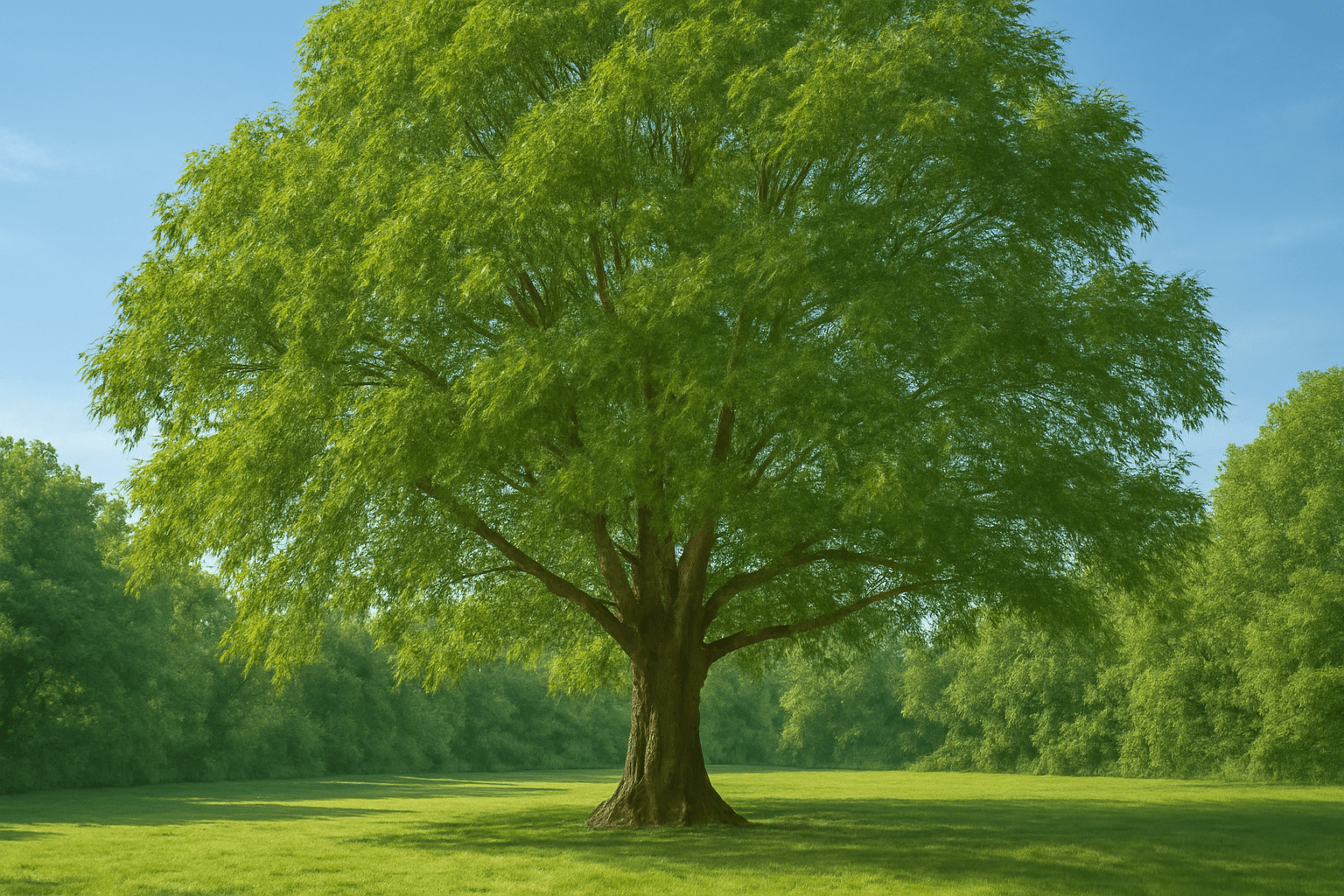
Frequently Asked Questions (FAQs)
How long does it take to grow a hickory tree from a nut? ⏳
It typically takes 2 to 3 years for a hickory nut to germinate and become a healthy seedling. However, it can take 15 to 30 years for the tree to reach full maturity and start producing nuts. Growing a hickory tree requires patience, but it’s a long-term investment that rewards you with beauty and shade.
How do I know when my hickory nuts are ripe? 🌰
Hickory nuts are ripe when the husks turn brown and begin to split open. You’ll also notice the nuts start to fall from the tree naturally. The best time to harvest them is usually in late September to early October, depending on your region.
Can I grow a hickory tree in a pot? 🪴
Yes, you can grow a hickory tree in a pot, especially in the early stages. However, hickory trees have deep roots and will eventually need to be transplanted into the ground to reach their full potential. Start in a large pot and transplant when the tree is strong enough to handle it.
What is cold stratification and why do I need it for hickory nuts? ❄️
Cold stratification mimics the cold winter months by storing the nuts in a fridge for 30 to 60 days. This process helps break the seed’s dormancy, ensuring that it will germinate when planted. Without cold stratification, hickory nuts may not sprout properly.
How deep should I plant hickory nuts? 🌱
Plant hickory nuts about 2 to 3 inches deep into well-draining soil. If planting multiple nuts, space them 6 to 8 inches apart to allow room for healthy root development. Proper depth is crucial for ensuring the nut has enough space to sprout.
Can hickory trees grow in any type of soil? 🌍
Hickory trees prefer well-draining soil that’s slightly acidic to neutral (pH 6.0 to 7.0). While they can tolerate various soil types, they grow best in loamy soil rich in organic matter. Ensure the planting location has good drainage to avoid waterlogged roots.
How do I protect my young hickory tree from pests? 🐛
To protect your young hickory tree from pests, regularly check for aphids, caterpillars, and scale insects. Use organic methods like neem oil or insecticidal soap to control these pests. Additionally, encourage beneficial insects, like ladybugs, to naturally combat harmful bugs.
How can I tell if my hickory tree is healthy? 🌿
A healthy hickory tree will have strong, straight branches, vibrant green leaves, and a well-established root system. Watch for signs of yellowing leaves, spots, or wilting—these could indicate water issues, pests, or diseases. Regularly inspect your tree for any changes to ensure it stays healthy.
